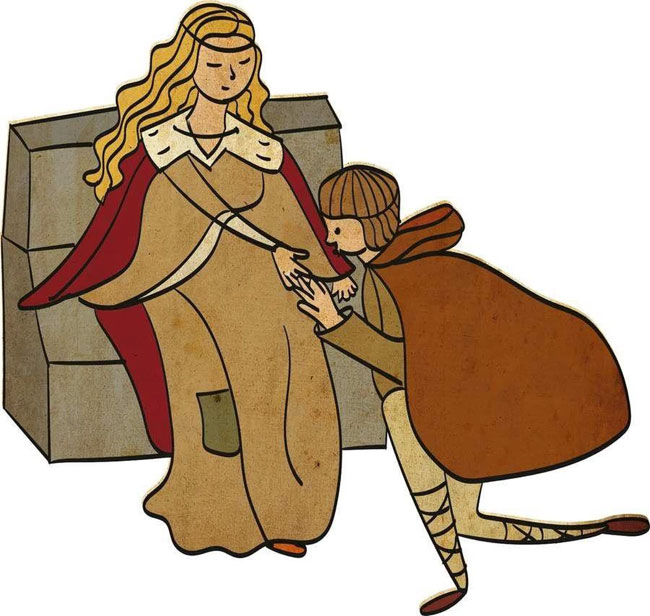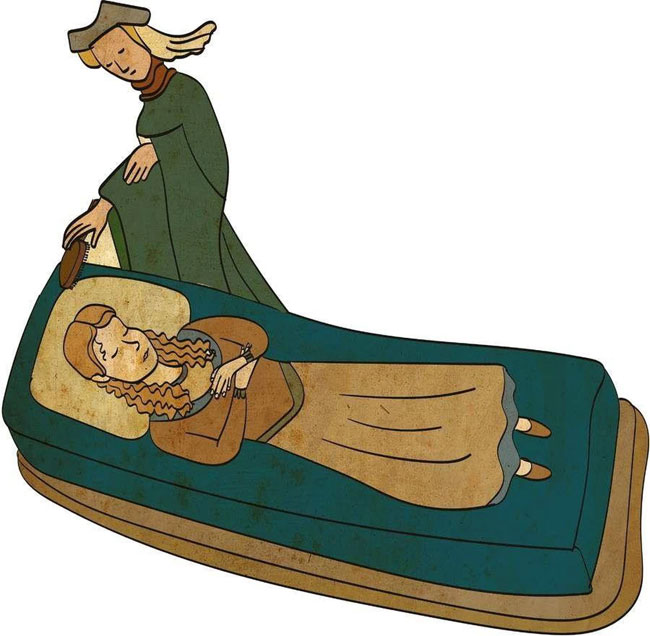Every era has its own unique customs, beliefs, and traditions. However, it is fair to say that few periods in history are considered as peculiar as the Middle Ages.
Strange Things from the Middle Ages
The Middle Ages have been marked as an unfortunate time to be born, with a consensus that people were impoverished, food was rotten, and everything was filthy. Nevertheless, this period is known for producing some of the strangest, most amusing, and astonishing trends in human history.
1. Courts for Animals
Life in the Middle Ages could be very harsh, and this applied not only to humans. All kinds of animals, from pets to insects, were put on trial if suspected of breaking the law. There are records of at least 85 animal trials during the Middle Ages, with stories ranging from tragic to absurd, as described in the book “Criminal Prosecution and Punishment of Animals” by EP Evans (EP Dutton & Company, 1906).

Medieval Court for Animals.
The most notorious offenders were pigs, who were charged and convicted for chewing on body parts and even eating children. Most were found guilty and sentenced to death by hanging or being burned at the stake. In 1386, a convicted pig was dressed in a waistcoat, gloves, and a human mask for execution.
In 1474, a court ruled that a rooster was guilty of “unnatural” behavior for laying eggs.
A donkey, which was the victim of unwanted sexual advances, was declared innocent after a strong defense from a monastery claiming it was a virtuous and well-behaved animal.
2. Unusual Men’s Fashion and Body Display Trends
Clothing was extremely important to the upper class in the Middle Ages, as it was a way to showcase wealth. Consequently, many unusual fashion trends swept across Europe, such as long, pointed shoes for men. The longer the shoes, the more wealth the wearer displayed. Some shoes were so long that they had to be reinforced with whale bones.
Men in the late 14th century were fond of flaunting their bodies through sheer and revealing garments. They often wore short tunics with tight-fitting trousers, known as “hose,” which had a pouch attached to the front to emphasize their masculinity.
3. Marriage Without Permission

Medieval Weddings Without Permission
Most marriages among the upper class in the Middle Ages were rarely based on love, but rather on political and social interests. Women had little voice in society. In fact, men and women were considered ready for marriage as soon as they reached puberty, at ages 12 for girls and 14 for boys.
Couples did not need permission to marry. They could do so in an instant by mutual consent, leading to marriages on the street, in taverns, or even in bed. This made it quite difficult to prove to others that they were actually married.
It was not uncommon for the bride to be carried by her family to the bed. The act of “bedding” was not considered an intimate moment but rather an action that needed to be witnessed by others.
4. Courtly Love
As mentioned, most marriages in the Middle Ages among the upper class were often loveless unions designed purely for financial and social gain. Thus, medieval nobles satisfied their romantic desires through courtly love.
This form of love was conducted in the presence of court members, and couples engaged in extravagant actions such as dancing and even holding hands. However, sexual relations were strictly prohibited. Courtly love was quite popular during this period.
5. Divorce by Combat
Couples in medieval Germany did not waste time resolving their conflicts. Instead of merely arguing like any normal couple, they took to the battlefield. Trial by combat was a common way to settle disputes, and when a married couple fought, there were strange restrictions, such as the husband having to stand in a hole with one hand behind his back while his wife ran around with a sack full of stones.
6. Faces Without Eyebrows or Eyelashes
While today many women spend money to enhance their eyelashes, it was quite the opposite in the Middle Ages. Since the forehead was considered the focal point of the face, women would pluck their eyelashes and eyebrows to highlight it. Some even shaved off all their hair to reveal a perfect oval face.
7. Death Must Be Beautiful

Medieval Attitude Towards Death.
People in the Middle Ages were very preoccupied with death, which is understandable considering the devout society of the time and the fact that many became victims of the “Black Death.”
Death was planned to be a peaceful departure. The dying were expected to accept their fate without despair. Many famous medieval paintings depict monks and saints accepting brutal deaths with serenity and calm.
8. Lawless Football
Medieval England experienced crowd violence related to sports long before the sport became globally popular.
What we now consider football to be violent, chaotic, and even deadly, was in the Middle Ages a game involving many players, often played throughout the village, and typically did not involve kicking a ball but rather the opposing team. A rulebook for “Shrovetide football” stated that any means could be used to score. In 1314, King Edward II decided to ban this game.
9. Rooster Wearing a Hat
The wealthy in the Middle Ages enjoyed serving food presented on swans. A favored dish at the dining table was a rooster wearing a hat, placed atop a pig.
10. Festival of Fools
Many people in medieval Europe participated in the Festival of Fools at the beginning of January. Like most Christian festivals inspired by a pagan celebration – Saturnalia, the most respected officials would swap places with the lowest, and maids would become masters…
Although initially intended to be limited to the sacred halls of churches, common folk organized parades, performed comic plays, sang lively songs, and of course, drank to excess.


















































